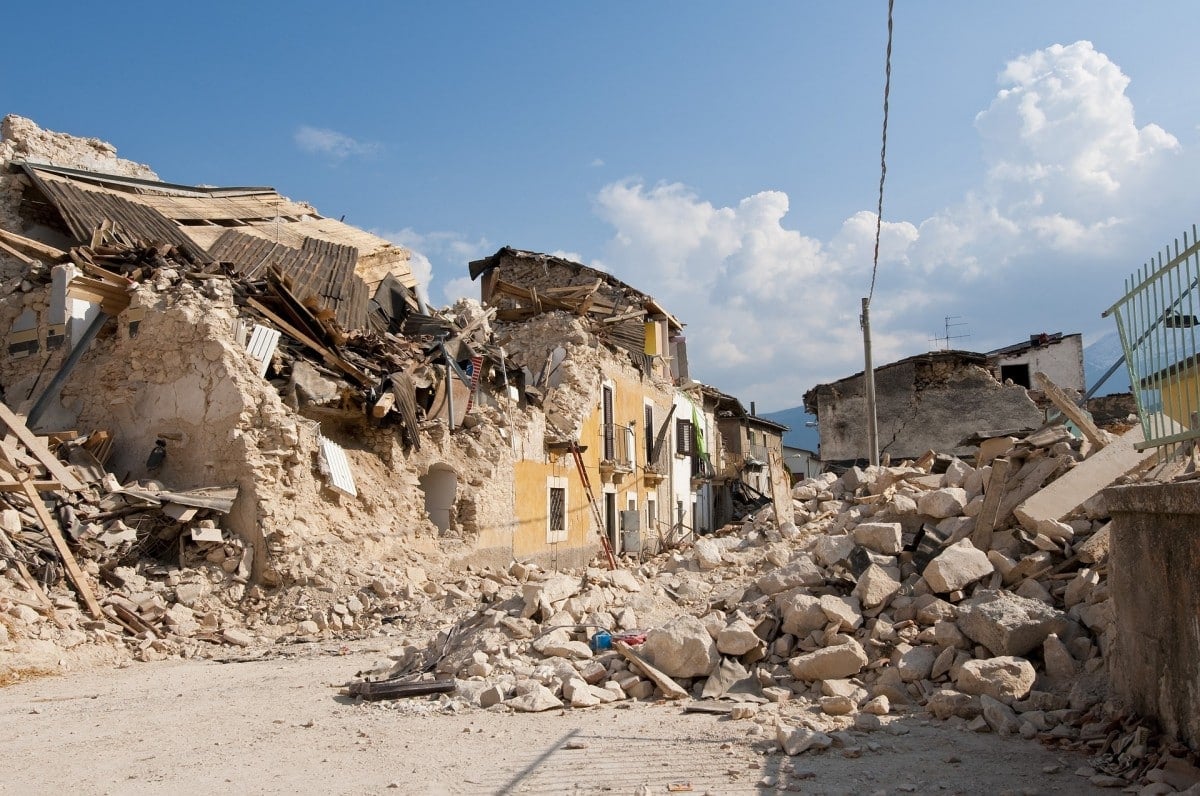
Worldwide, hundreds of earthquakes occur every day, and more than a million every year. However, most of them have a magnitude of 1 to 2 on the Richter scale and are so minor that they can only be detected by sensitive instruments. Only earthquakes of magnitude 4 cause noticeable vibrations, while earthquakes of magnitude 5 can cause damage to buildings. Even earthquakes of this magnitude occur more than 10,000 times each year.
Even earthquakes with a magnitude of more than 7 happen monthly. Earthquakes with a magnitude of more than 8 occur approximately once a year. The strongest earthquake ever measured was the Valdivia quake, which occurred in Chile on May 22, 1960. It had a magnitude of 9.5 and triggered a 25 metre high tsunami. In Germany, too, the earth trembles almost daily. Between January 1 and May 30, 2019, 114 earthquakes with a magnitude between 1 and 2.8 were registered.
While the earthquakes in Germany do not cause any damage, in many countries of the world earthquakes not only cost people their homes and possessions, but also their lives all too often. However, it is not always the main earthquakes that cause the most damage and are the strongest, often it is the relatively weak aftershocks that have far more catastrophic effects. Much of the damage could certainly be minimised and lives saved if these quakes could be predicted.

Neuronal network to locate the epicentre
There are essentially two types of earthquakes: tectonic and volcanic. Tectonic earthquakes are much more frequent than volcanic ones and are also much stronger. In these earthquakes, seismic waves travel through the earth, consisting mainly of compression or primary waves (P-waves) and shear or secondary waves (S-waves). The faster P-waves arrive first at a seismological station, followed by the slower S-waves. Both can be recorded in seismograms.
Despite constantly improving technology, earthquake prediction is still not completely reliable. But researchers at the Karlsruhe Institute of Technology (KIT) have now found a way to precisely locate earthquake centres. They use a neural network to determine the arrival time of seismic waves. In the journal Seismological Research Letters, they explain that artificial intelligence can evaluate data just as accurately as an experienced seismologist.
The scientists explain that it is important to precisely determine the arrival of the many earthquake waves at the seismometer station – the so-called phase input – in order to precisely localise the seismic events. Only then would it be possible to carry out further seismological evaluations. It could also be possible to predict aftershocks, which can sometimes cause more serious damage than the first quake. The precise localisation of earthquake centres would also make it possible to better distinguish physical processes underground, which in turn would enable scientists to draw conclusions about the structure of the earth’s interior.

Evaluation by AI more accurate than by seismologists
The evaluation of the seismograms, the so-called picking, is traditionally done by hand. This is not only very time-consuming, a certain subjectivity of the seismologist can also affect the accuracy. However, the picking algorithms developed for automatic evaluation so far have not achieved the accuracy of manual picking by an experienced seismologist, as various physical processes influence the seismic wave field.
However, scientists at KIT’s Geophysical Institute (GPI), the University of Liverpool and the University of Granada have now shown that artificial intelligence can evaluate data with the same accuracy as humans. They used a Convolutional Neural Network (CNN) and trained it with a relatively small data set on 411 earthquake events in northern Chile. CNN then determined the operating times of unknown P-phases and S-phases at least as accurately as an experienced seismologist when picking manually – and it was far more accurate than a classical picking algorithm.
“Our results show that artificial intelligence can significantly improve earthquake analysis – not only with large amounts of data, but also with limited data,” explains Professor Andreas Rietbrock of the GPI.
Also interesting:
The human brain as an inspiration for AI developers: What to do when artificial intelligence fails?
Prague gets new European institute for artificial intelligence
Artificial intelligence for the investigation of swarm behaviour






